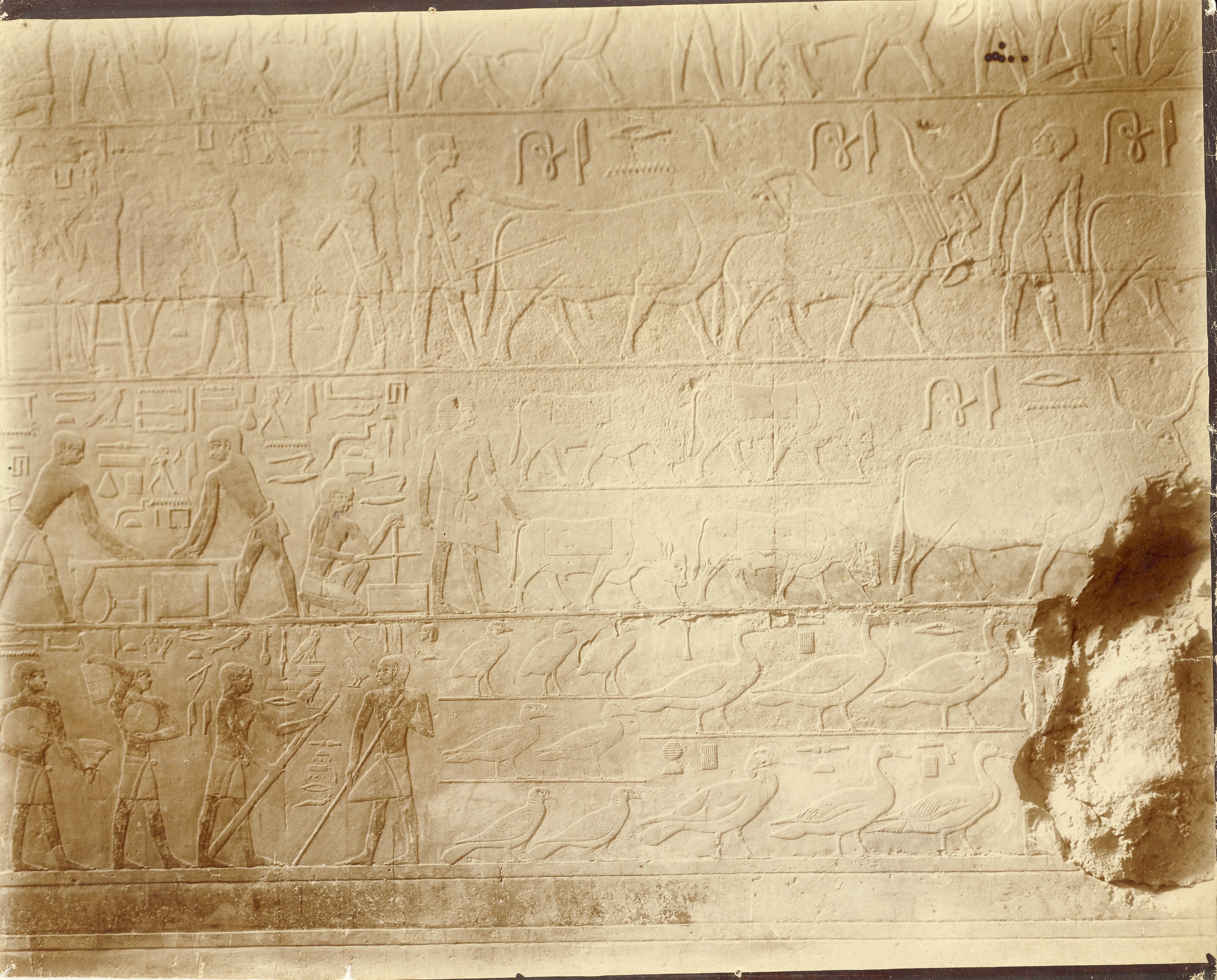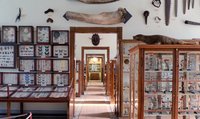Dieses Foto stammt aus der Mastaba des Ti. Hierbei handelt es sich um die typische Grabform der Oberschicht des Alten Reiches (2700-2200 v. Chr.) in ├ägypten. Es ist ein von au├čen schmuckloser, kubischer K├Ârper mit in der Regel absch├╝ssigen Seiten.
Die Mastaba hier findet sich in der Nekropole von Sakkara. Wie f├╝r die 5. Dynastie typisch f├Ąllt das Grab viel gr├Â├čer aus als die Mastabas der vorherigen Dynastien. Au├čerdem gibt es ein viel umfangreicheres Dekorsystem, da auch die Zahl der R├Ąume deutlich gestiegen ist.
Das Foto zeigt die S├╝dwand der Kapelle. Es werden Rinder und Gefl├╝gel vorgef├╝hrt und von Beamten begutachtet bzw. erfasst.
Ein bestimmter Fotograf l├Ąsst sich nicht feststellen.
Das Foto ist intakt. Die Farbe ist bereits etwas ausgeblichen.
Oben links auf der R├╝ckseite steht:
"Grab des Ti. Sakkara"
en

